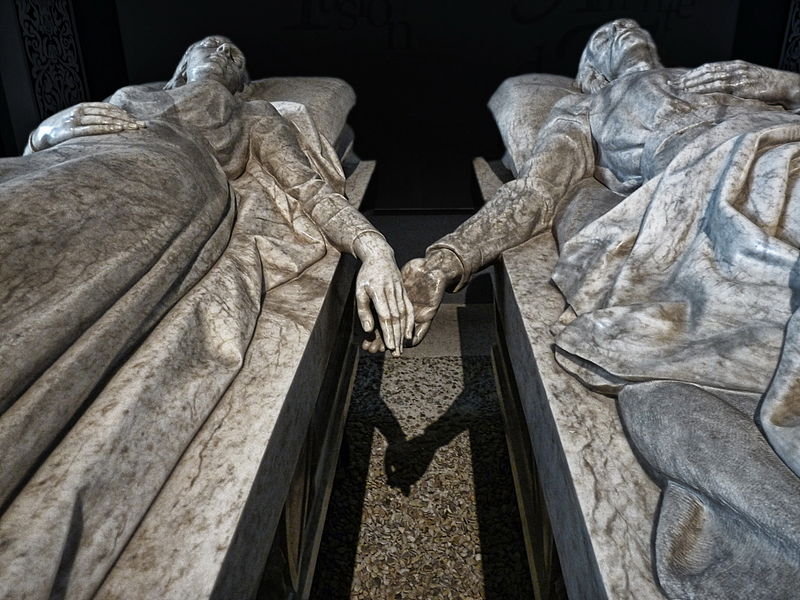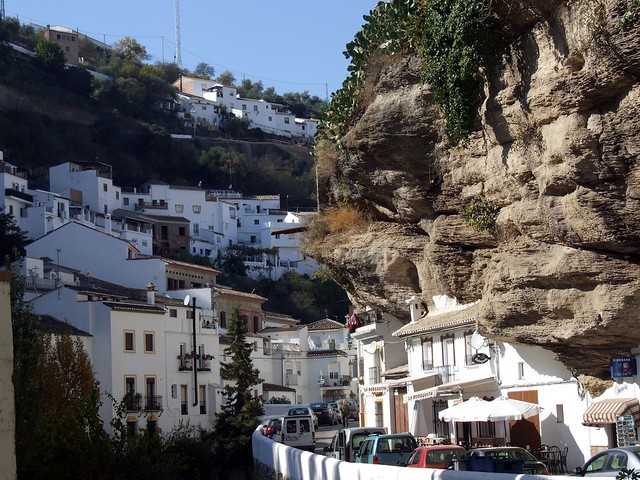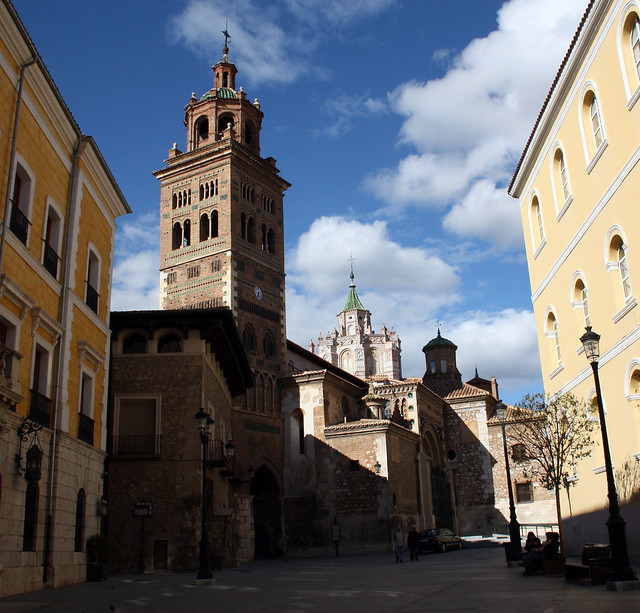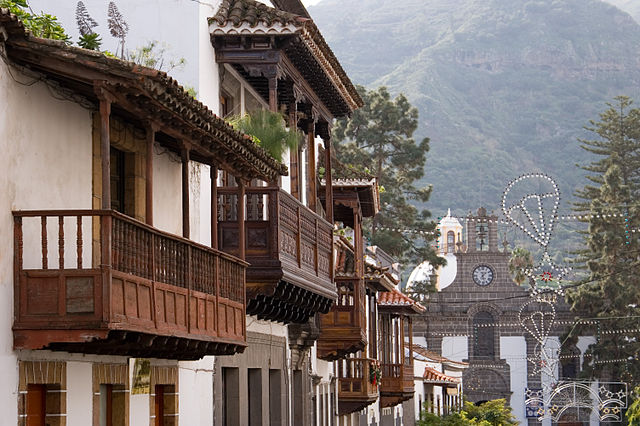In honor of el día de San Valentín (Valentine’s Day), of course! But as you might imagine, in a country crammed with crenelated castles, Arabian Nights palaces, and dreamy beaches, it’s a tall order indeed to zero in on the “most” romantic. It’s true, too, that one way to enhance the romance of almost any destination in the country is to opt for one of the paradores (inns), usually sited in some of the most gorgeous spots and historic buildings imaginable. But as I have traveled the length and breadth of the peninsula and its islands over the years, I've amassed a trove of getaways I find splendidly suited to nurturing romance, whether it’s a passionate, burning flame or a warm, comfortable ember.
The list below is by no means exhaustive, of course, and I don’t mean to malign other equally wonderful parts of Spain, which I hope to cover in future posts. I’m certain, too, that those of you who know your way around Spain will have your own particular favorites, so please do share in the comments below.
ANDALUSIA
The passionate land of flamenco, Carmen, and Tales From the Alhambra certainly offers romantic rincones galore (not to mention mighty appealing daytime temperatures for February, in the teens Celsius and 40s/50s Fahrenheit!). There are the utterly charming little white hilltop towns like Sentenil de las Bodegas above the Trejo River in Cádiz, its old town full of dwellings built into the craggy cliffs (above). Speaking of Cádiz, if your tastes run more toward mar (sea) than montaña (mountains), the Costa de la Luz west of Gibraltar is less built up than the Costa del Sol, with fetching little beach villages to escape to such as Bolonia, with a gorgeous beach and a restored ancient Roman city to explore nearby. Then of course the city of Granada will sweep couples off their feet with its Moorish grandeur, with palaces and gardens out of myth, Arab tearooms, and intimate little gypsy caves up Sacromonte hill for tapas and flamenco.
ARAGON
With its capital Zaragoza, the noble lands of Aragon offer many exquisite escapes to cities, small towns, and countryside (for nature-lovers, there’s a lot of wild, unspoiled areas, as it’s one of of Spain’s least densely populated regions). But for romantics, its extreme south is also home to one of Spain’s most emblematic legends of star-crossed lovers. The small, striking city of Teruel is known for its Serrano ham, its surrounding dinosaur digs, and a whole lot of marvelous Mudejar buildings, built by Muslim architects and craftsmen left behind in Spain even after the final Christian reconquest was completed in 1492. But the Valentine’s-Day-minded will want to pay homage to Diego and Isabel, the 12th-century Lovers of Teruel (top), whose tragic love story is commemorated in a mausoleum next to the local Church of San Pedro.
ASTURIAS
There’s something about the wooded rolling hills of Spain’s north that I find particularly well suited to canoodling with my honey at any time of year – even in February when things aren’t in bloom and there’s a nip in the air. Asturias is a top choice because of its cosy casas rurales (rustic holiday rentals) to snuggle in, whether in the mountainous interior like Sames (above) orTaramundi, or in one of the quaint fishing towns such as Llanes and Cudillero, with the occasional forays for sightseeing at a Romanesque church or a meal of a hearty seafood or white bean stew with a glass of local cider.
BALEARIC ISLANDS
Though many think of Majorca and Ibiza especially as hopped-up party destinations, these islands, along with Minorca and Formentera, are actually troves of tranquility and local flavour, especially in the off season. While island capitals such as Palma de Mallorca, Ibiza Town, and Mahó have their own charms for lovebirds, to really get away from it all, head for the hills – you can for example find a lovely mix of the laid back and arty in lovely towns like Deiá (Majorca coast, above) and Sant Carles de Peralta (inland Ibiza).
CANARY ISLANDS
Though the Canaries tend to bring mass tourism to mind for many people, there are plenty of spots throughout these seven islands for lovers to hide themselves away for a little quality time (not to mention swimming and sunbathing – still warm enough for that in these parts at this time of year!). One of my favorite “get-away-from-it-all” isles is Lanzarote, which can really feel like another planet at times! Development is less than on islands like Tenerife and Gran Canaria even in the main resort city of Puerto del Carmen. For that extra measure of escape, find a bolthole down south in the gleaming white town of Yaiza, near wonderful beaches and Timanfaya National Park, where a way cool thing to do includes camel treks. Even on the big, popular islands, there are plenty of hideaways – some of which have the advantage of being postcard-pretty and traditional Canarian in character, such as Garachico on Tenerife and Teror on Gran Canaria (above), yet also still within fairly easy striking distance of la rumba if some night you feel like hitting the dance floor.
CATALONIA
Barcelona will always be the highest-wattage star of the Catalan show, but there is an enormous richness of romance along the coasts as well as into the interiors and up into the Pyrenees. Just for starters, I’d steer you up to the Costa Brava very near the French border, where the port towns of Calella de Palafrugell (above) and somewhat larger, better known Cadaqués make exquisite ports of call for your love boat (is that purple enough?). The seafood, of course, is delectable, and attractions in the area include the gotta-see-it-to-believe-it house and museum of surrealist artist Salvador Dalí in Port Lligat. Catalonia is also chock full of medieval towns such as Pals, Vic, and Monells, with charming hotels, inns, and flats; in one, Cardona, you can stay in a primitive Romanesque castle dating back to the 9th century. And if you’re wine lovers, Catalonia is a must – you’ll want to head to Penedés, source of its cavas (sparkling wines) and Priorat, home to its venerable and prestigious reds.
images | José Luis Mieza, maesejose, David Domingo, José Balido, Adrian Pingstone, Guido.Haeger, Patronat de Turisme Costa Brava Pirineu de Giron







Comments